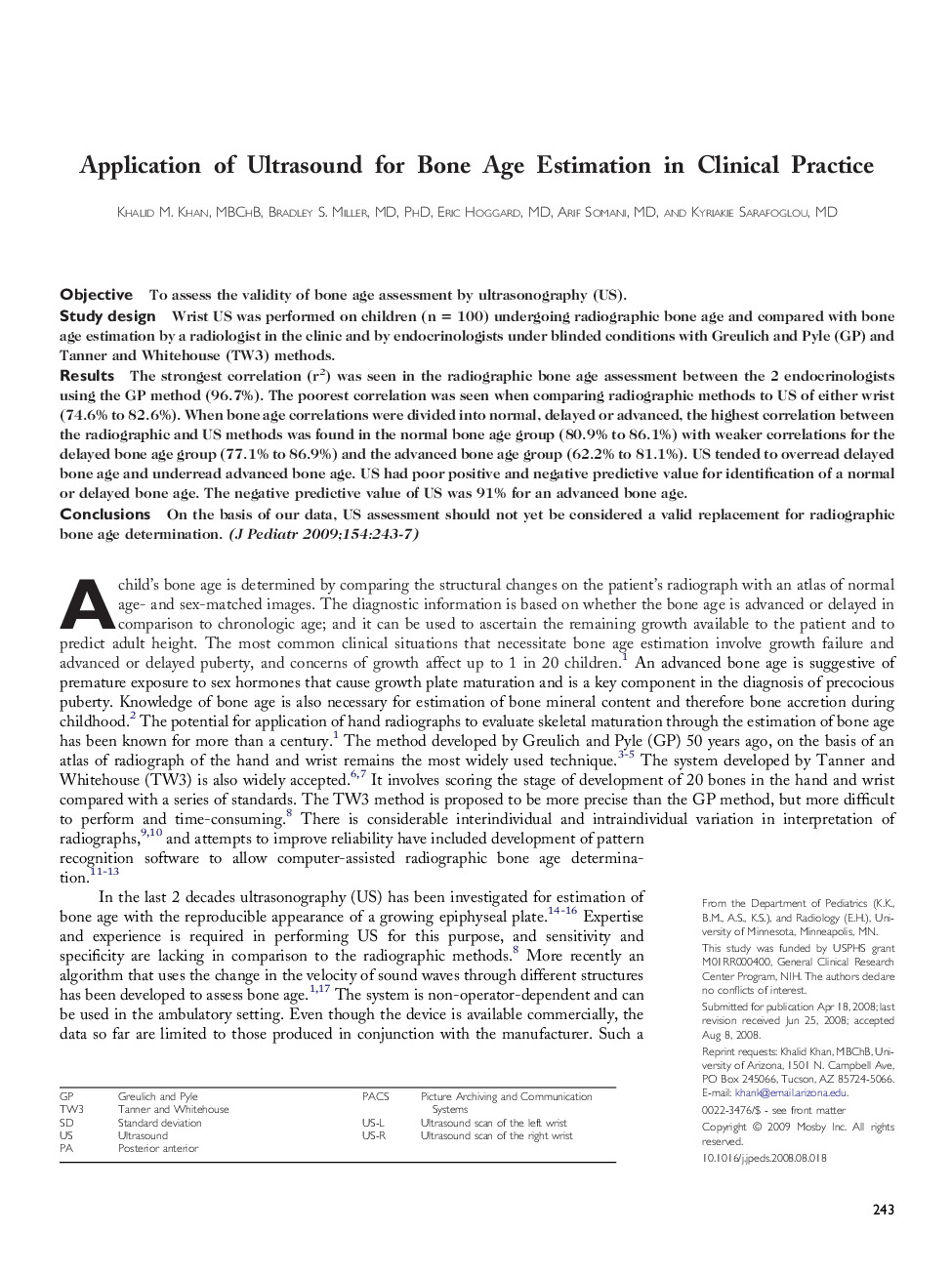| Article ID | Journal | Published Year | Pages | File Type |
|---|---|---|---|---|
| 4166799 | The Journal of Pediatrics | 2009 | 5 Pages |
ObjectiveTo assess the validity of bone age assessment by ultrasonography (US).Study designWrist US was performed on children (n = 100) undergoing radiographic bone age and compared with bone age estimation by a radiologist in the clinic and by endocrinologists under blinded conditions with Greulich and Pyle (GP) and Tanner and Whitehouse (TW3) methods.ResultsThe strongest correlation (r2) was seen in the radiographic bone age assessment between the 2 endocrinologists using the GP method (96.7%). The poorest correlation was seen when comparing radiographic methods to US of either wrist (74.6% to 82.6%). When bone age correlations were divided into normal, delayed or advanced, the highest correlation between the radiographic and US methods was found in the normal bone age group (80.9% to 86.1%) with weaker correlations for the delayed bone age group (77.1% to 86.9%) and the advanced bone age group (62.2% to 81.1%). US tended to overread delayed bone age and underread advanced bone age. US had poor positive and negative predictive value for identification of a normal or delayed bone age. The negative predictive value of US was 91% for an advanced bone age.ConclusionsOn the basis of our data, US assessment should not yet be considered a valid replacement for radiographic bone age determination.
